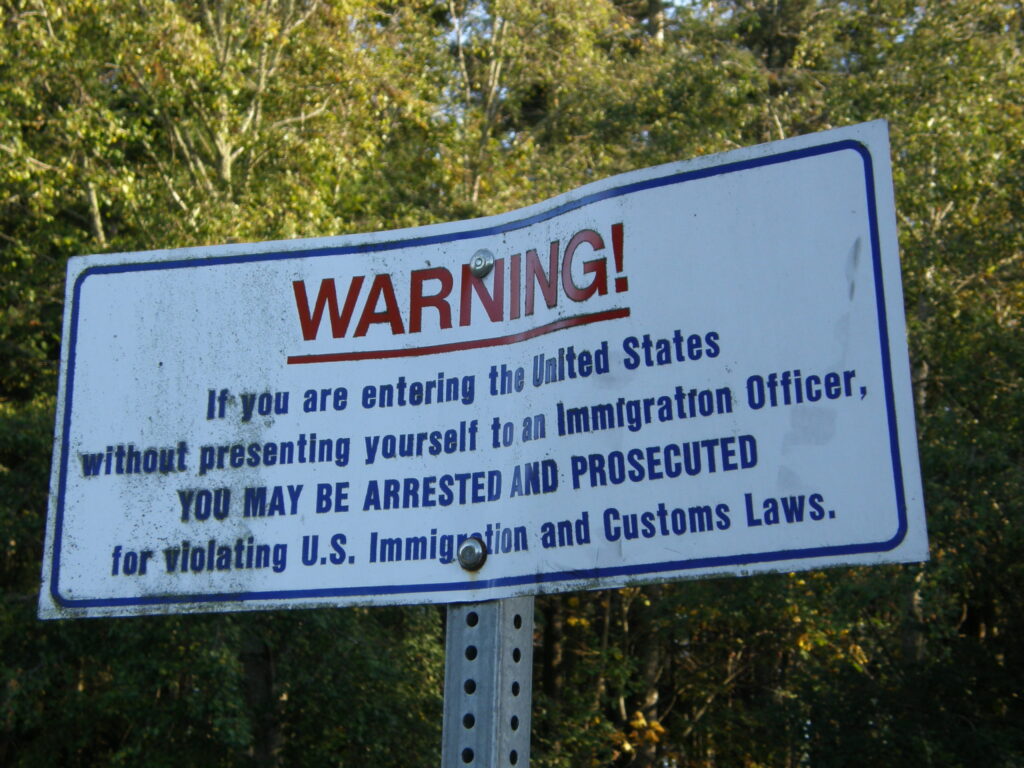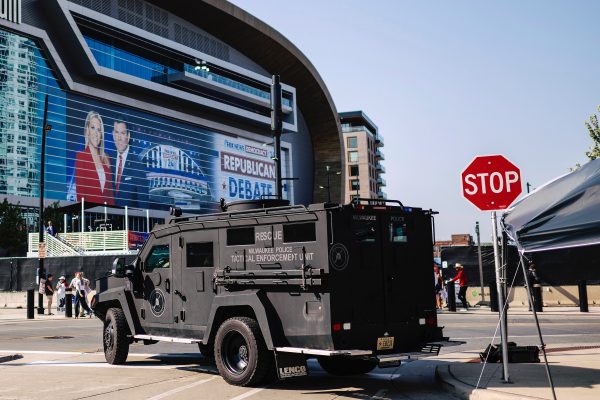Whatever differences may exist between President Obama’s comprehensive immigration reform plan and the proposals of Congressional Democrats and Republicans, they all agree that border enforcement is a top priority. Bipartisan efforts to enhance border security are not new. In the last 20 years both Democratic and Republican administrations have implemented policies and signed laws to shore up the border, from Operation Hold the Line in El Paso and Operation Gatekeeper in San Diego in the early 1990s under Bill Clinton, to the Patriot Act and Secure Fence Act under George W. Bush.
Remarkably, this bipartisanship has only strengthened in the face of skyrocketing deficits and calls for austerity. According to a recent Migration Policy Institute report, in fiscal year 2012 the Obama administration spent a record $11.7 billion on enforcement of the U.S.-Mexico border, and the total immigration enforcement budget has increased by a factor of 15 since 1986 (in inflation-adjusted dollars). Moreover, the number of Border Patrol officers along the southern border hit a record high of 18,500—more than doubling in the last 10 years alone—and the number of line-watch hours has increased tenfold over the last 20 years.
Washington’s focus on border enforcement isn’t justified by facts on the ground. Apprehensions are at a 40-year low, net migration from Mexico is at or near zero, and based on crime rates cities along the U.S. side of the border are among the safest in the nation. Yet the bipartisan obsession with enforcement continues, with a commitment to waste billions more tax dollars.
Our focus on border security has also led us to ignore its consequences for those on the other side of the wall. To understand the full implications of an enforcement-first approach we must examine its impact on those most affected: current and future migrants.
Our visa quota system is remarkably outdated and inadequate. Since the 1965 Hart-Celler Act, the system has allocated an equal number of visas to all countries, regardless of demand, geographic proximity, or historical migration patterns. The result is an enormous backlog for Mexicans, Filipinos, Chinese, and Indians. Even Mexicans and Filipinos with relatives in the United States sponsoring their visa applications confront 20-year waits. Faced with such a hurdle, people look for other ways to migrate in hopes of finding work and bettering their economic standing, and often times in order to be reunited with their family. Ramping up enforcement is the federal government’s response to a problem largely of its own making, with serious consequences for migrants.
What impact do enforcement-on-steroids policies have on potential migrants (many of whom have U.S. citizen family members and have lived in the U.S. themselves)? The answer is clear: the militarization of the U.S.-Mexico border over the last three decades has exacted terrible economic and physical costs.
Approximately 700 miles of wall now line the border, and in some places two or three separate walls cover the same stretch. More than anything, the wall is a symbolic display of U.S. sovereignty and supposed control over its national territory. Securing the border is both practically and economically unfeasible, especially in times of austerity. A recent study by Bloomberg Government estimates that closing the border would require an additional $28 billion a year, some $10 billion more than the Customs and Border Patrol and Immigrations and Customs Enforcement budgets combined.
Rather than stopping migrants from crossing, the walls and enhanced enforcement force them to cross through desolate and dangerous terrain, often under extreme conditions. Sadly, but not surprisingly, migrant deaths and the likelihood of dying en route have spiked as a result. A 2009 American Civil Liberties Union report found that migrants were 17 times more likely to die while crossing the deadliest part of the border than they were in 1998. Last year, 477 people died attempting to cross the border, the highest total in two decades and an average of more than one person per day. And, of course, that does not include those who are never found.
By pushing enforcement-first policies and failing to reform the visa allocation process the federal government also furthers Mexican drug cartels’ control over migration to the United States. In recent years the cartels have gained, maintained, and extended their control over northbound migration routes. The Mexican government’s failure to combat the cartels and ensure migrants’ safety exacerbates the problem. Rampant corruption within the Mexican migration service and local police forces doesn’t help either.
With no other options and little-to-no protection, migrants are forced into the cartels’ orbit and subject to extortion, kidnapping, physical abuse, sexual assaults, enlistment as drug mules, and even executions. Today Central American migrants may pay up to $7,000 to reach the United States. During the trip, an estimated 60 to 80 percent of women are sexually assaulted. Just last week the Mexican navy found 104 Central American migrants who were being held hostage by a cartel in Tamaulipas, the same northern border state where a mass grave containing the remains of 72 migrants was discovered in 2010.
From the Mexican side of the border, where I currently live, America’s enforcement-first policies are discussed disparagingly in the media and in the streets. People here understand—and the past has clearly shown—that futile attempts at “securing” the border won’t stop people from migrating, but they will lead to more deaths and help fortify Mexican drug cartels. Surely comprehensive immigration reform can and should do better.








